Rottnest Island (Wadjemup): Everything you need to know
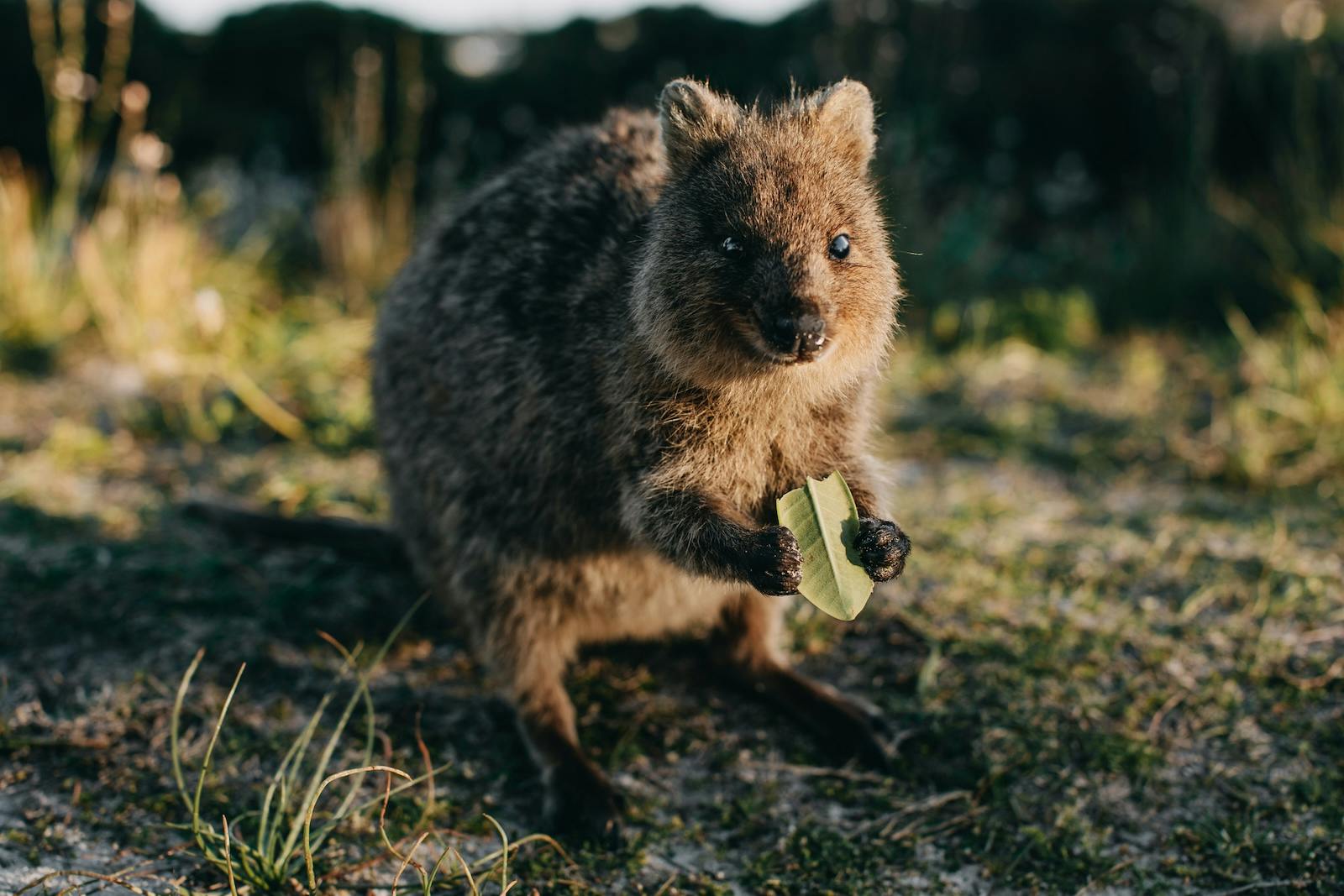
Wadjemup – also known as Rottnest Island – is undoubtedly one of our state’s most spectacular destinations.
Sparkling turquoise water beckons you to swim, dive or surf, while the island is covered with a network of trails to explore via bicycle. As well as an idyllic holiday destination, it’s also vital to acknowledge the island’s dark and bloody history as an Aboriginal prison and forced labour camp between the years of 1838 and 1931.
What is it?
Wadjemup is 19 km2 of glorious beaches, spectacular snorkelling and picturesque trails. During the last ice age, the island was still connected to mainland Australia and was used as an important spiritual site and meeting place. Wadjemup, Carnac Island and Garden Island were formed with the rising of sea levels, but Wadjemup in particular remained a culturally significant site for the Whadjuk people. While it’s primarily populated by tourists and visitors, the island does have a permanent population of approximately 300 essential service providers.
An A Class Reserve, the limestone island is famously home to the quokka – the world’s friendliest marsupial – as well countless other fauna. The ocean is particularly rich with animal life, including a colony of New Zealand fur seals you can see at the Cathedral Rocks lookout, pods of bottlenose dolphins and spectacular whale migrations you can spot from shore. Less than 20 kilometres west of Rottnest Island is the Perth Canyon Marine Park. Encompassing over 2900 square kilometres and reaching depths of four kilometres, between March and May it’s also where you’ll find the largest concentration of blue whales in Australia. As well as blue whales, you might also spot humpbacks, orcas, minkes, sunfish and many more marine megafauna. In the centre of the island, a network of foamy, pink-hued salt lakes are roughly four times as salty as the sea, and are bordered by samphire and saltbush plants.
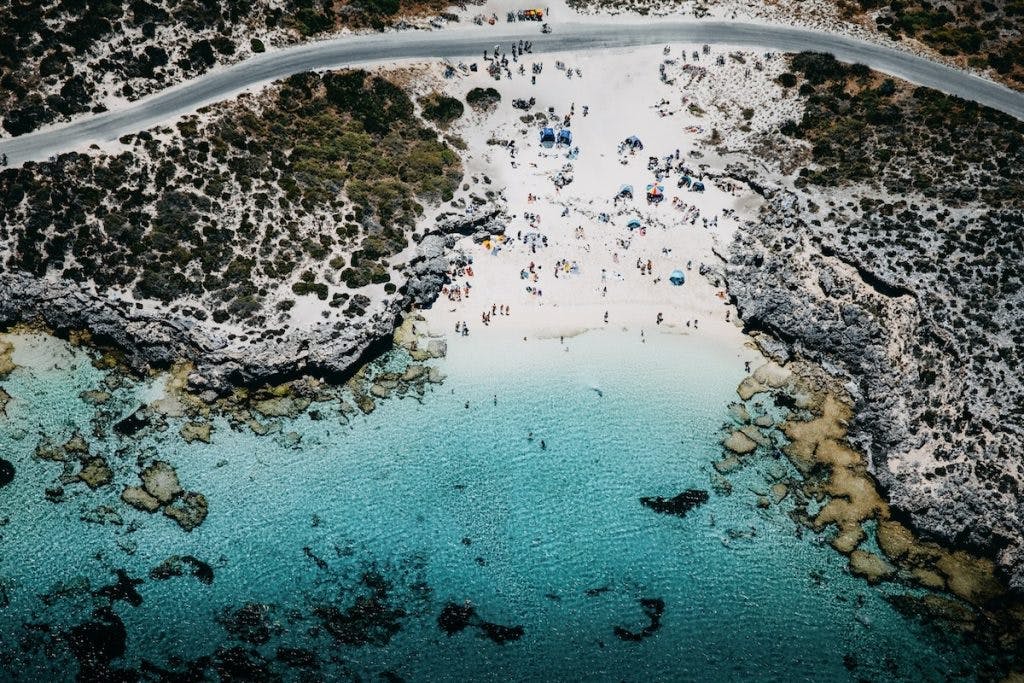
While the island is now a spectacular holiday destination, it wasn’t always the case. During WA’s colonisation, the island was used as a penal camp for Indigenous prisoners – overwhelmingly, they were unjustly incarcerated for actions directly related to colonisation. The first prisoners were brought to the island in 1838, heralding almost a century of forced slave labour and deaths in custody. To get to Wadjemup, prisoners were transported from all over Australia, and were forced to travel thousands of kilometres in chains. Although the closure of the prison was recommended in 1902 and it officially closed in 1904, it remained a forced labour camp until 1931. A total of 4000 First Nations men and boys were incarcerated during this time, 370 of whom died. Many of the iconic buildings on the island were constructed using slave labour during this time, including the Quod, the museum, churches, lighthouses, the Seawall and the heritage cottages in the main settlement.
Although the island was still in use as a forced labour camp until 1931, it started being used for recreation in 1902, with weekly ferries bringing tourists on Sundays. The summer of 1911 saw the first use of select Thomson Bay houses for tourist accommodation, with more of the prison buildings transformed for recreational visitors from 1913 and additional facilities constructed in 1917.
As well as recreationally, Wadjemup also has a military history. During World War I, the island was commandeered by the Department of Defence and used as an internment and Prisoner of War camp between 1914 and the end of 1915. Leading up to World War II, defence infrastructure was built on the island, including the Oliver Hill and Bickley Batteries, the Army Barracks at Kingstown, a fortress and signal station at Signal Ridge – as well as various other structures. From 1940 to 1945, the island was entirely closed to the public, with 200 Italian internees sent to carry out repairs and renovations on the Thomson Bay buildings.
Where is it?
Wadjemup is located 19kms off the coast of Perth, and is on Whadjuk Noongar boodja. Most commonly accessed via ferry, journeys take approximately 25 minutes from Fremantle or 90 minutes from the CBD. You can also get to the island by private boat or by air, where you’ll get to take in some pretty spectacular aerial views (plus the option to skydive if you’re really adventurous!). If you are travelling to Wadjemup via private boat, you’ll need to arrange for a rental mooring and island admission fees, which go towards the island’s conservation.
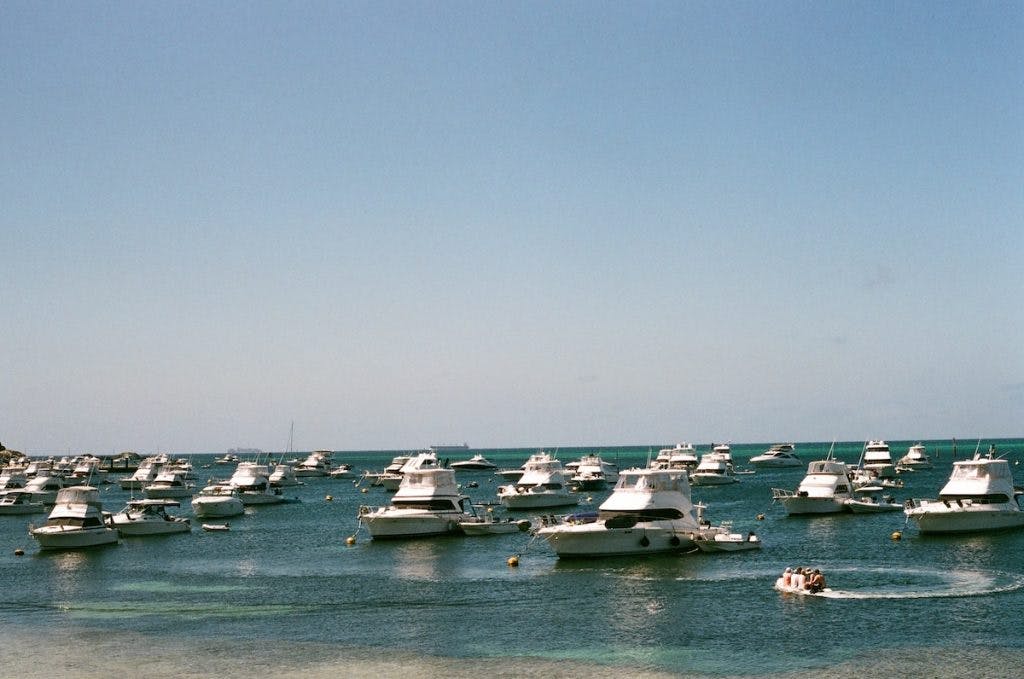
What to do?
It goes without saying, if you’re at Rotto, you’re at the beach – with such a spectacular coastline, you’ll want to make the most of it during your stay. Calm and secluded bays make it perfect for little ones (or grown-ups who prefer tranquil waters), but the reefs surrounding the island also make it a world-class destination for snorkelling and diving. The most extensive reef is found at Little Salmon Bay, where you can follow an underwater snorkel trail.
The calm waters also make the island perfect for activities like stand up paddle boarding and kayaking – you can even sign up for a glass bottom sea kayaking or waterbike tour to get a truly unique view of the spectacular marine life. While there are plenty of calm and protected bays, Wadjemup is also home to some iconic surf breaks – including Strickland Bay, which has been ranked in the world’s top 50.
With the amazing Perth Canyon, whale watching boat tours are a popular way to experience the island’s truly wild wildlife. If you’re hoping to spot whales from dry land, head to the west end of the island; lookouts like the Cape Vlamingh Viewing Platform are perfect, or to Cathedral Rocks on the West End to see the seals.
If you prefer to keep your feet dry, the island is best explored on two wheels. With no cars on the island (except for essential vehicles), bikes are the most popular way to travel – you can bring your own or hire some wheels for your stay. Do you know what else has two wheels? Segways! The team at Segway Tours WA will show you the island in style, visiting some of the island’s most popular beaches or discovering the natural habitats inland.
The Wadjemup Bidi is a recently constructed 45km walking trail network that lets you discover the island on foot. Five trails vary in length from 5.9 to 10kms, and wind through the island and hidden areas you can’t normally access on the bike paths or roads. As well as the big drawcard spots (like Pinky’s and Salmon Bay), you’ll be able to visit secluded areas that you’ll likely have all to yourself. The trails also provide walkers an important insight into Wadjemup’s cultural history, while paying respects to Traditional Land Owners. Not up for following a map? Let the experts at The Hike Collective guide you along the trails, or join a Go Cultural Wadjemup Aboriginal Tour where you’ll discover more about the island’s significance in Noongar culture.
As much as there is to do, you may need a helping hand to keep the kids occupied… Luckily, there’s plenty more on offer! Rottnest Movies and Mini Golf will keep the family entertained. As well as a historic deckchair cinema and mini golf course, they also have heaps of arcade games on offer.
While you’re there, it’s well worth taking in some of the historical landmarks of the island. Near the centre of the island, you can visit the Oliver Hill Battery, where you’ll see a restored World War II 9.2 inch gun and explore the maze of underground tunnels. The Wadjemup Museum reopened in 2020 following extensive renovation works. Located in the Old Mill and Hay Store, it’s an essential and enlightening experience. Just around the corner on the Heritage Common, you can check out Lomas Cottage – originally built for “Imperial Pauper” and ex-convict, John Lomas, the cottage is now both a historical artefact and exhibition space. Just to the west of Heritage Common, a visit to the Wadjemup Aboriginal Burial Ground provides an opportunity for solemn reflection on the island’s history.
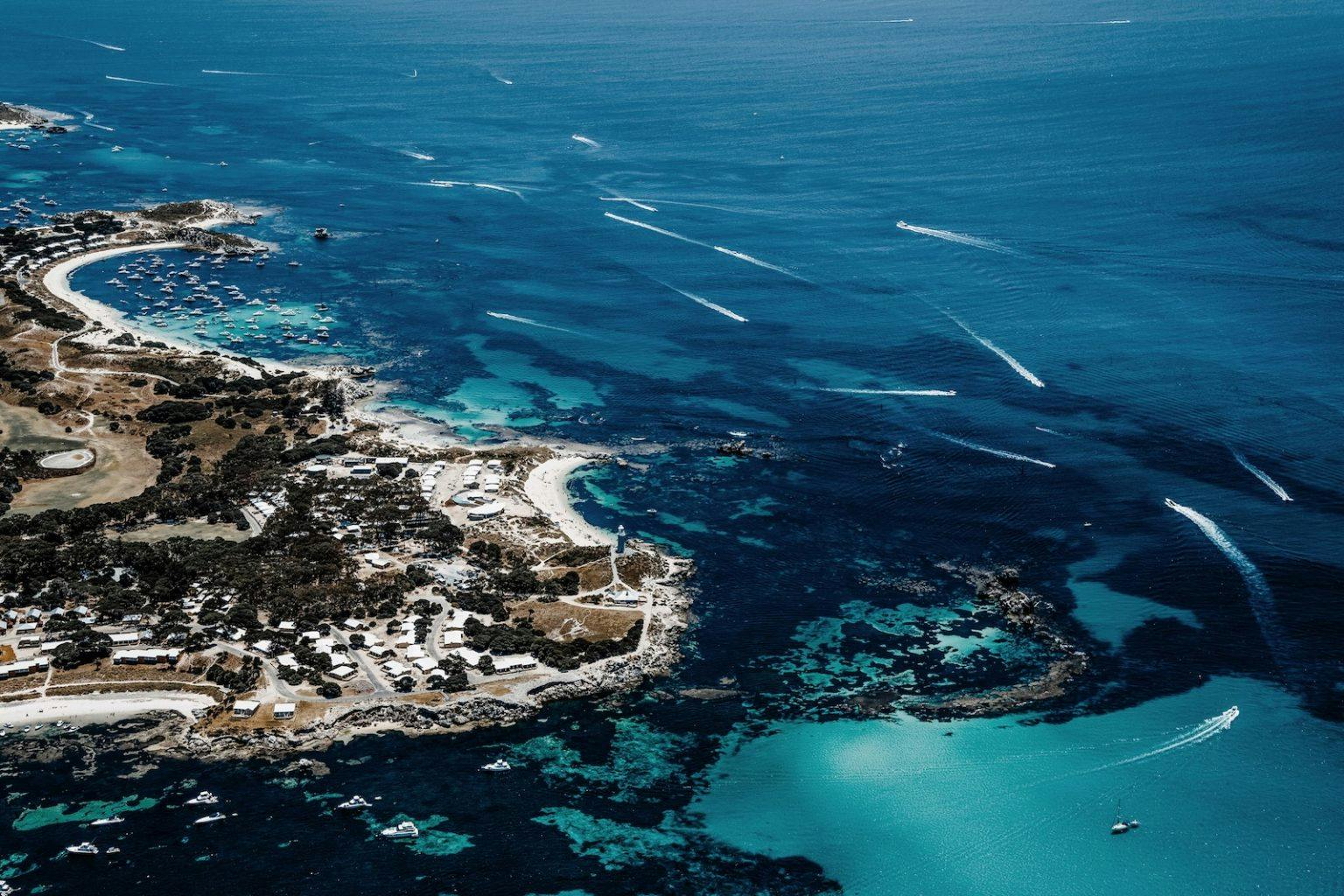
What not to do:
The whole island is an A Class Reserve – which means all plants and animals on Wadjemup are protected by law. So don’t touch any wildlife! Don’t do it! As cute and friendly as the quokkas are, you’ve just gotta resist getting too close, and definitely don’t feed them. Not only can it make wildlife aggressive or dependent on humans, it can also be deadly, with many of our common foods causing them serious illness.
Subscribe to our free newsletter!
As with all visits to our natural spaces, adhere to the Leave No Trace Principles: meaning don’t leave any rubbish out there, don’t pick wildflowers and try your best to look after the surrounding area. Make sure you also adhere to any fire restrictions or bans that might be in place.
Where to stay?
While you can visit Wadjemup for just the day, there’s so much to do that we’re sure you’ll want to stay longer.
There are a wide range of accommodations at Rotto, at a variety of price points – however, it’s advised to book in advance for all of them! Samphire is the island’s newest option and is located in the heart of Thomson Bay – it’s a great option for those who just want to arrive with just their essentials, particularly for smaller groups. All over the east side of the island, houses and cabins are available that range from premium beachfront properties to heritage cottages – these are perfect for larger families or getting a group of mates together.
You can also get amongst the action at Pinky’s Beach at the Discovery Eco Resort glamping tents. More budget friendly options include camping, or snagging one of the the Caroline Thomson cabins, heritage bungalows, or check out the dormitory-style accommodation at the Kingstown Barracks. As well as your budget, consider what location you’ll be staying in: if you prefer to keep things simple in a self-contained cottage and don’t mind being further from the main settlement, Geordie Bay is a favourite. If you want to stay in the thick of things (or perhaps you’re not as confident on the bike), you may want to keep close to Thomson Bay.
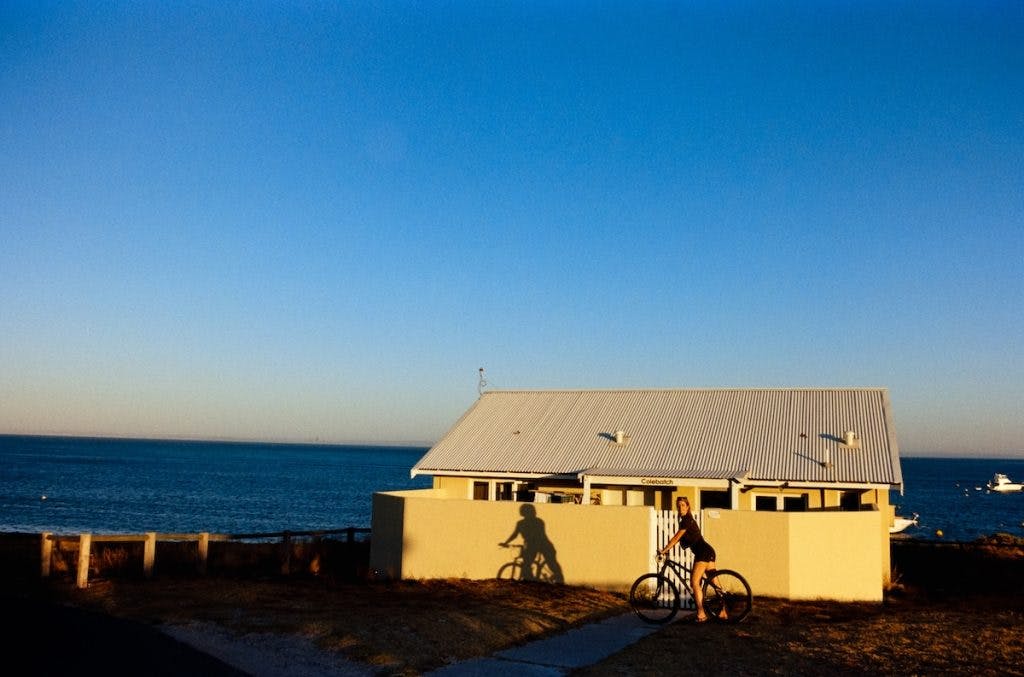
The most important thing to consider? Book ahead! While you can sometimes get lucky with a last minute booking, most accommodation is booked-out well in advance. Open Day for bookings happens eight months in advance at 8:30am – there’s even a handy guide for how to maximise your chances of getting your preferred house. It’s competitive, so be prepared with your options and dates!